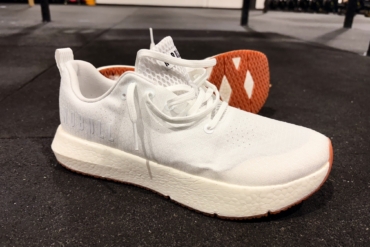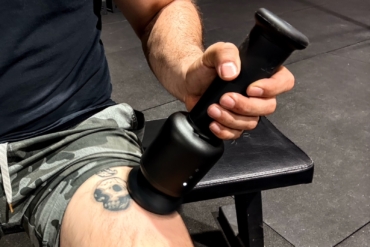Boulder-based marathoner Mark Plaatjes is about to open a running shoe store he said will fix much of what plagues the sport today: too many choices and not enough biomechanics education.
Top photo courtesy Edgar Chaparro/Unsplash
Before opening the industry-changing Boulder Running Company (BRC) in 1995, South African Mark Plaatjes had two national titles under his feet — one in the marathon and one in cross-country.
When the Olympics barred his country due to apartheid, it seemed to squelch Plaatjes’ dreams. But he went on to find success as a naturalized American, winning over 20 major marathons and taking the 1993 world championship title in the discipline.
Ran with the legendary Mark Plaatjes this morning. Great athlete, great person & @BoulderTC patron. pic.twitter.com/GILWySUiPw
— Lee Troop ???????? (@runtroopy) October 22, 2015
Plaatjes is an experienced runner who continues to train regularly with a small group in Boulder. Plaatjes sold BRC in 2013 to focus on his work as a physical therapist, performing up to 10 gait analyses a day at his rehabilitation clinic. And he’s seen what bad running form — and the shoes that sometimes encourage it — can do to perfectly normal athletes.
“I saw a 30 percent increase in running injuries after the introduction of minimalist shoes,” he said.
Those types of preventable and equipment-related injuries are what he’s hoping to fix at his new store, In Motion Running, named after his PT practice. After permit delays, it’s set to open in October in Boulder, the proverbial mecca of running in America.
Running Shoe Store Makeover

To be clear, Plaatjes isn’t knocking minimalist or maximalist running-shoe trends specifically. Nor does he consider them the root cause of today’s injured runners.
He’s focused on why, even with these well-intentioned innovations, people still suffer injuries for the same old reasons.
“The biomechanic tools people once had have fallen by the wayside,” he said, referring to services offered at BRC, like gait analysis and professional shoe fitting. “All the things that we did before are not being offered anymore.”
But Plaatjes doesn’t place the fault solely on shoe stores.
“The shoe companies are partly to blame,” he claims.
According to Plaatjes, medium-support shoes used to be the bread-and-butter product, and running shoe stores could exist by selling just eight brand styles. But now there are more shoes on the market than ever, and each approaches running mechanics in different ways.
And Plaatjes argues the combination of more shoe choices and less in-store education increases the risk for injury.
A Hopeful Fix for Future Injuries

So what’s his running shoe store going to do differently? Put the PT office right above the 5,000-square-foot shop, for one — something Plaatjes said no other store does.
And he said he’s going to refocus on staff training that helped make BRC a hit in the old days.
“People are put into the wrong running shoes all the time,” Plaatjes said. “Almost every brand has something that will work, but we’ve got to pay attention to the details.”
Education, Selection, and Customization

At In Motion Running, Plaatjes plans to stock a solid selection of running shoes, including some of his favorites like Brooks and Saucony. These brands, he said, “haven’t thrown out the baby with the bathwater” when it comes to trends in running shoe design.
Plaatjes will train his staff in video gait analysis on the treadmill as well as pronation (inward or outward rotation of the foot on impact) education for runners. Customers will be able to try different shoes and put in some test miles to see what works. And those suffering from running-related injuries or trying to prevent reoccurrence can visit the physical therapy office for advice and rehab with Plaatjes.
The running shoe game is crowded, and Plaatjes takes aim against stiff competition. To be sure, runners’ injuries are complex and not just a result of what’s on their feet. But with his pedigree and experience, Plaatjes believes he’ll find and meet the demand.
“Being medical-, injury-, and gait-focused, I am filling a very specific niche,” he said.






